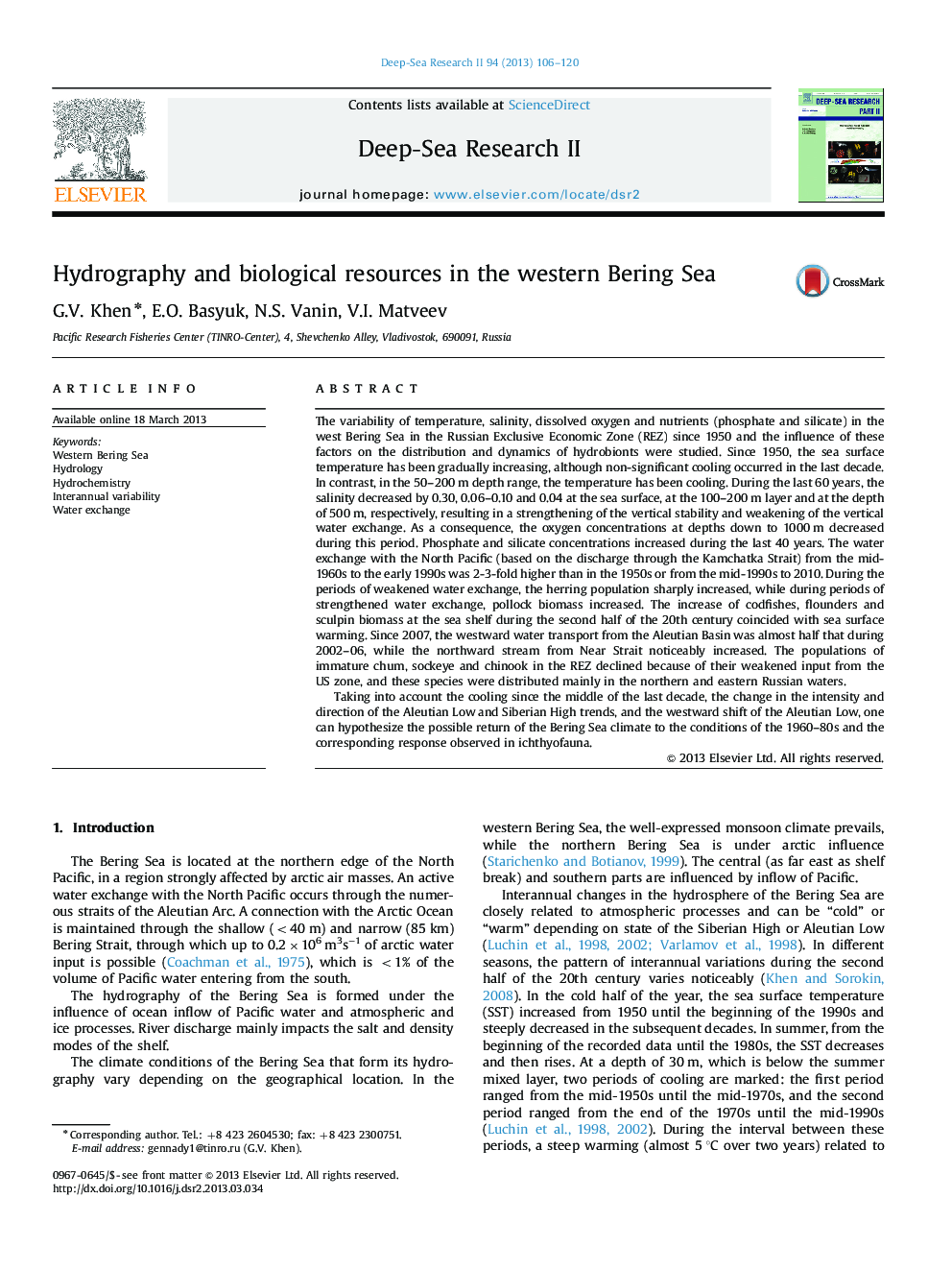| Article ID | Journal | Published Year | Pages | File Type |
|---|---|---|---|---|
| 4536464 | Deep Sea Research Part II: Topical Studies in Oceanography | 2013 | 15 Pages |
The variability of temperature, salinity, dissolved oxygen and nutrients (phosphate and silicate) in the west Bering Sea in the Russian Exclusive Economic Zone (REZ) since 1950 and the influence of these factors on the distribution and dynamics of hydrobionts were studied. Since 1950, the sea surface temperature has been gradually increasing, although non-significant cooling occurred in the last decade. In contrast, in the 50–200 m depth range, the temperature has been cooling. During the last 60 years, the salinity decreased by 0.30, 0.06–0.10 and 0.04 at the sea surface, at the 100–200 m layer and at the depth of 500 m, respectively, resulting in a strengthening of the vertical stability and weakening of the vertical water exchange. As a consequence, the oxygen concentrations at depths down to 1000 m decreased during this period. Phosphate and silicate concentrations increased during the last 40 years. The water exchange with the North Pacific (based on the discharge through the Kamchatka Strait) from the mid-1960s to the early 1990s was 2-3-fold higher than in the 1950s or from the mid-1990s to 2010. During the periods of weakened water exchange, the herring population sharply increased, while during periods of strengthened water exchange, pollock biomass increased. The increase of codfishes, flounders and sculpin biomass at the sea shelf during the second half of the 20th century coincided with sea surface warming. Since 2007, the westward water transport from the Aleutian Basin was almost half that during 2002–06, while the northward stream from Near Strait noticeably increased. The populations of immature chum, sockeye and chinook in the REZ declined because of their weakened input from the US zone, and these species were distributed mainly in the northern and eastern Russian waters.Taking into account the cooling since the middle of the last decade, the change in the intensity and direction of the Aleutian Low and Siberian High trends, and the westward shift of the Aleutian Low, one can hypothesize the possible return of the Bering Sea climate to the conditions of the 1960–80s and the corresponding response observed in ichthyofauna.
